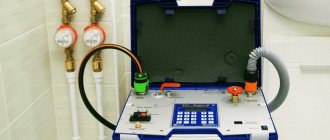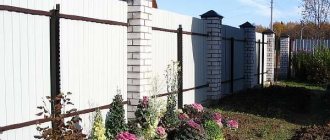The condition of sewer pipelines determines the overall performance of the system. A clogged sewer in an apartment building is a serious problem that affects all residents of apartments related to the problem drain.
It must be eliminated as quickly as possible, since the system cannot be used. At least one of the apartments will begin to flood, and the result will be a lawsuit against the culprit of the blockage. The question is capacious, far beyond the scope of ordinary plumbing tasks, so it should be considered more carefully.
The legislative framework
Most residents of apartment complexes ask questions about who is responsible for the water supply, who to contact if breakdowns occur in the system, and who is obliged to compensate for the damage. In addition, in force majeure situations, partial or major repairs of the pipeline are required. The law helps you figure out who to contact in each of these cases.
As follows from Art. 36-37 of the Housing Code of the Russian Federation, the management company (MC) or housing and communal services are responsible for maintenance and repairs. Current expenses are covered by the monthly utility bills of the building's residents. However, if the user himself is to blame for the breakdown, he will compensate for the damage caused.
The fact that housing and communal services are obliged to restore the operation of water supply systems in apartment buildings is also indicated by the Federal Law of July 21, 2007 No. 185-FZ “On the Fund for Assistance to the Reform of Housing and Communal Services.”
Signs of clogged sewer pipes
The first sign of a clogged sewer pipe is the slow flow of water into the system. If you drain clean water and the situation does not change, this is a sure sign that it is necessary to take measures to clean the sewer.
The second sign is the spread of an unpleasant odor throughout the house. If you do not attach importance to this circumstance, you will soon be unable to do without calling the emergency housing and communal services service or the management company.
Does the housing office have the right to turn off water?
Read how to file a complaint with Rospotrebnadzor against the management company here.
What to do if you are flooded by your neighbors, read the link:
Who is responsible for the condition of the sewage system in the apartment building?
The sewerage system in the apartment building can be divided into three sections:
- outside the house,
- in the house,
- in every apartment.
The public sewerage system is monitored by a company responsible for managing housing and communal services, or a residents' association (HOA). These organizations are responsible for troubleshooting problems that arise. Moreover, the repair team workers must not only weld the crack or replace the pipe, but also make sure that there is no moisture in the basement, which can cause the appearance of fungus and mold.
We propose to understand in more detail what the rights and responsibilities of the management company of apartment buildings are.
The owner is responsible for the condition of the pipes in the apartment. Responsibility for the system located outside the home lies with the city authorities.
Hydrodynamic method
When a drain pipe in a multi-story building becomes clogged, cleaning it with soda or a plunger may not help.
Sometimes a more serious means is required - a hydrodynamic machine. It is in the service of special services, which provide professional services in this area.
The use of a hydrodynamic machine gives excellent results in the most difficult situations. How does the machine work? It supplies water under high pressure into the pipe through nozzles of different sizes. Cleaning is carried out in two stages:
- At the first stage, a special hose with nozzles pierces the plug in the sewer and partially removes deposits from the surfaces.
- Then smaller nozzles operate, they spray liquid under pressure to clean the walls. The nozzles have a ruff shape.
Preventative work
Preventive measures can prevent blockages from occurring. These events include:
- flushing drains with boiling water;
- a ban on throwing household, food waste and chemical components into the toilet;
- using a fat separator.
In everyday life, cleaning drains in an apartment is often done with vinegar and soda. There are many cleaning products available at your local hardware store that can help keep your pipes in optimal condition.
Preventive actions are aimed at extending the life of the pipeline and minimizing the likelihood of blockage.
In some cases, you can clear communications yourself, but in more serious situations you should contact specialists.
Prevention measures
To eliminate the possibility of blockages in pipes, you must follow the rules for operating the sewer system:
- do not throw construction waste or paper (except toilet paper) into the toilet;
- Do not pour food waste into the system;
- Avoid throwing away cat litter, especially those based on clay and sawdust.
These simple rules will help maintain the functionality of the system and eliminate possible problems in relations with neighbors and employees of the management company.
Why is the sewage system clogged in an apartment building?
Clogs are a common plumbing problem. The methods for independently removing blockages in a private and apartment building are not particularly different.
The main reason why water does not flow well in the toilet is the accumulation of fatty deposits on the inner wall of the pipes. Blockage also occurs in the following cases:
- Deterioration of communications.
- Using pipes that are too small in diameter. Such a pipeline will be constantly clogged until the system is brought into optimal condition.
- Incorrect laying technology, as a rule, violates the requirements for pipe slope. Experts recommend maintaining a suitable degree of slope, raising each subsequent meter of pipe by 2 cm.
- Incorrectly installed toilet. The use of cement when installing the product reduces the diameter of the pipe, which increases the risk of blockage.
- Sewer leakage. The system must cope with self-cleaning. Let's say an item of clothing got into it. If the system is tight enough, the item will quickly fly out of the pipe, otherwise it will get stuck for a long time.
Sewage cleaning is more often required when cast iron pipes are installed in the apartment building, which are highly resistant to wastewater. With the appearance of corrosion, roughness and irregularities form on the walls, blocking the flow of water.
Also, water may drain slowly due to a clogged siphon. Before cleaning the pipes, disassemble it and check it.
Down up
Let's start with a simple listing of sewerage elements. When listing, we will move against the movement of stocks - from bottom to top:
- The yard sewage well is located under the authority of the Gorvodokanal. It ends in a well that discharges the drains of several risers outside the walls of the house (usually from one entrance);
- The outlet to the well is a pipe with a slope in its direction, laid through the foundation of the building and laid below the freezing level of the soil. The outlet discharges wastewater into a tray in the concrete bottom of the well;
- Lezhnevka is a horizontal pipe connecting sewer risers;
Sewer bed.
I am using terms used in the region where I happened to work as a plumber. Often, even among professionals, the same object is called differently. The same bed can be called a sun lounger or simply a horizontal sewer.
- A riser is a vertical pipe that collects drains from apartments located above each other;
- Comb - intra-apartment sewerage. It got its name in those days when plastic wiring for apartments with adjacent bathtubs and kitchens was made monolithic and really looked like a rare comb for combing hair;
- Fan pipe - ventilation outlet of the riser to the roof.
Now let's move on in the same order.
Removing the blockage
At first glance, it is difficult to determine whether it will be possible to clean the pipes on your own, or whether you can do without the help of specialists.
If you cannot clear the blockage in the sewer in an apartment building using steel wire, a plunger, or chemicals, contact the utility service.
We deal with the problem ourselves
In a situation where the pipeline capacity leaves much to be desired, you can try to solve the problem on your own. There are many ways to clean sewer pipes:
- chemical;
- mechanical;
- hydrodynamic;
- traditional methods: soda, salt and boiling water, soda and vinegar.
It is very effective to remove blockages in the sewer system in an apartment using chemicals. It is important to remember safety precautions and use gloves, a mask, and goggles.
User action algorithm:
- Pour or pour the required amount of product into the drain hole.
- Add 300-500 ml of water.
- Wait 10-15 minutes.
- Flush the drain well with water. 2-4 buckets will be enough.
The chemical “Mole” is especially popular; you can also find drugs from Domestos, Mr.Muscle and others in stores. Chemicals should be used only as a last resort, since the composition contains acid or alkali. You cannot use different means at the same time so as not to cause a reaction.
Another answer to the question of what to do if the sewage system in an apartment building is clogged is to clean the pipes mechanically. You will need a wire, brush, cable or plunger. The choice of tool depends on the complexity of the situation. If the blockage is not serious, it is enough to use a brush.
Communications are often cleaned using a plunger:
- The drain hole is covered with a device.
- Let the water run so that the bowl of the plunger is covered.
- Check that there is no water underneath.
- Without lifting the plunger from the sink, make 15-20 vertical movements.
The cable has a rigid structure, so it must be used carefully. After completing the steps listed above, you need to open the water. If the liquid leaves quickly, there is no blockage, otherwise the procedure should be repeated. Experts recommend this method to those who do not know what to do if the water in the toilet does not drain.
A more complex method is hydrodynamic cleaning. To do this, it is necessary to use equipment that creates a powerful jet of liquid. Hydrodynamic cleaning is performed using devices with spiral nozzles of various diameters. They are placed near sinks or toilets, a spiral is inserted into the drain hole, which then begins to rotate and breaks through a blockage of any density. Only professionals can perform such cleaning.
Who to contact if your drain is clogged
Almost every resident at least once in his life has had the question of who to call if the sewer in his apartment is clogged. The choice of specialist depends on the situation:
- There is a clog in the toilet or a pipe has burst in the bathroom - you should call the plumbing installers of the housing department or another management organization.
- Sewage wells are serviced by the city water utility.
- The tenant clogged the pipe, causing several apartments to flood at once. In this case, the emergency service must respond to an emergency call.
- Dispatch services are responsible for repairing and cleaning pipes. Their numbers are indicated on utility bills.
If for some reason you cannot find the dispatcher’s phone number, you should contact the city administration or emergency service hotline. Operators will tell you who to call when the sewer is clogged.
We recommend that you learn more about what functions the emergency housing and communal services service performs.
Professional equipment
A cable is not always enough to clean the sewer system. If debris and various deposits, including fat, have accumulated for a long time, a simple cable may not penetrate the plug.
ATTENTION! In this case, the help of a professional plumber and his equipment is required.
What is a professional drain cleaning device? This is a special machine (mechanical or electromechanical) that allows you to feed a spring with one or another attachment into the pipe. If it is necessary to clean an external sewer pipe, a hydrodynamic machine is used.
But even modern professional equipment may not be able to cope with sewer blockage caused by residues of building materials (paint, putty, cement) . It is recommended to throw such residues in the trash without flushing them down the drain.
If some does end up in the drain pipe, you need to rinse it thoroughly afterwards. Hardened putty or cement - such an obstacle in the pipes cannot be removed with a simple cable or chemical means, sometimes it is even necessary to change part of the sewer system.
Deadlines for emergency response
According to clause 5.2.2 of the TEZhF PiN (Rules and Standards for the Technical Operation of the Housing Stock, approved by Resolution of the State Construction Committee of the Russian Federation No. 170 dated September 27, 2003), applications for damage to utilities and structural components of the house are considered within a few hours after their submission, and carried out no later than the next day.
Sometimes it takes a longer time to fix an emergency in the sewer and water supply, or the technicians do not have the necessary spare parts. Taking into account the circumstances, a decision is made, of which the applicant is informed.
The deadlines for eliminating accidents in the housing and communal services sector are set out in Appendix 2 of the Rules and Regulations of the TEZhF.
If a breakdown poses a threat to the safety of residents, it is repaired as quickly as possible. Emergency faults of pipes and their connections with fittings, fittings and various devices should be dealt with immediately.
Well
Description
If the storm sewer is closed with lattice covers to receive wastewater, then the yard sewer well is closed with a monolithic cover, which prevents the entry of foreign objects into it.
Well cover.
Its location is marked on the wall of the house with a designation of the form KK12, KK5, etc., in which the letters indicate the sewer well, and the number indicates the distance to this well in meters along a line drawn perpendicular to the wall with the designation.
A typical material for well walls is reinforced concrete rings with a diameter of 1000 mm. Steel brackets are fixed in the wall, allowing you to go down to the bottom level. The bottom is concreted to prevent untreated waste from entering the ground; There is usually a recess in the concrete - a tray that directs wastewater into the next well and then into the collector.
Problems
A blockage between the wells means that the entrance drains enter it, but do not go to the collector. Cleaning according to the current regulations must be carried out pneumatically:
Instructions for pneumatic clearing of blockages.
As you know, in our country not all technological operations are carried out in accordance with the regulations. Drain cleaning is no exception. In practice, sewer wire is used for it - steel wire with a diameter of 5 - 6 mm with a hook at one end and a handle at the other.
Cleaning is carried out as follows:
- The coil of wire is completely unwound;
- The mechanic goes down into the well and feeds the wire with a hook to the blockage;
- His partner pulls the wire, preventing it from folding into loops, and rotates the handle, helping the hook break the cork.
Blocked yard drain.
This method has four serious disadvantages.
- The walls of the well are always covered with a layer of dried sewage. A person who descends into it rises to the surface in a very unsightly form;
- The brackets of old wells are often partially or completely destroyed: wet waste fumes have a detrimental effect on the steel;
- Methane and other gases that are products of fermentation of wastewater or penetrating from the ground often accumulate in the well. By themselves they are not overly toxic; however, a lack of oxygen may well lead to loss of consciousness, and lifting an adult from a narrow shaft is more than a difficult task. The accumulation of gases in wells leads to the death of several people every year;
- When clearing a blockage, a multi-meter column of sewage hits the opposite wall of the well with such speed and force that it is quite problematic to escape from the splashes.
Typical condition of a properly functioning well.
That is why experienced Vodokanal mechanics carry with them to accidents the simplest device - a pipe with a diameter of 32 - 40 mm, bent in the shape of a hockey stick. Its short side is inserted into the outlet from the side of the well, after which the wire is fed to the blockage through the pipe.
Who is to blame and how to compensate for losses
To determine who is to blame for a clogged sewer in an apartment building, you should analyze the situation. In most cases, breakdowns in sewer pipes are not the fault of residents. If there is no reason to believe that the blockage between floors was caused by the tenant, there is no need to pay to eliminate the damage.
If suspicions arise that a specific person has violated the terms of operation of communications, it is necessary to organize an examination. An important role in this situation is played by a commission from the housing department, which will determine how and who neglected the requirements for the operation of sewer pipes.
Utility accidents can also occur due to the fault of the management organization.
If representatives of the management company have not proven that they properly maintained the common property, they are to blame. The fact of the accident confirms the improper maintenance of the building's common property. However, if the plaintiff has not proven that the management company improperly maintained the common property, the management organization is considered innocent.
Find out in more detail in what cases the management company is liable.
If maintenance is carried out by an outsourced contractor
It is a common practice when the maintenance of a house is carried out by a management organization (MA) through an external contractor. The agreement for the maintenance and repair of common property in an apartment building between the management company and the contractor is considered bilateral - it does not regulate the relationship between the management company and the apartment owners.
In such cases, damage from flooding of premises is recovered from the management company if its guilt is proven.
Chemicals
Manufacturers produce a large variety of powders, gels, and other chemicals that effectively deal with many types of blockages. They usually cause corrosion of debris using aggressive substances.
If food debris or hair or animal hair has accumulated in the pipe, this problem can be eliminated using this method. How to use chemicals? Almost all of them contain hazardous substances, so you should always follow the instructions from the manufacturer:
- You should work with protective gloves, avoiding contact of the product with your skin.
- The choice of product should be made taking into account the material used to make the pipes.
- It is necessary to follow all the manufacturer’s recommendations and monitor where the drug is stored.
- For complex blockages, you can reuse the product to achieve the full effect.
Blocked riser: symptoms
It’s easy to understand that the riser is clogged:
1. Residents of the top floors have water in all plumbing fixtures. She just doesn't go away.
There is nothing and no one above. Only the attic and roof. Either something was thrown into the sewer vent, or the bird made a nest (which is unlikely).
2. For residents of one of the lower floors, the picture of the blockage looks brighter. Sewage from the neighbors above pours out of the original toilet directly onto the floor.
And, of course, the residents of the upper floors are to blame for this.









